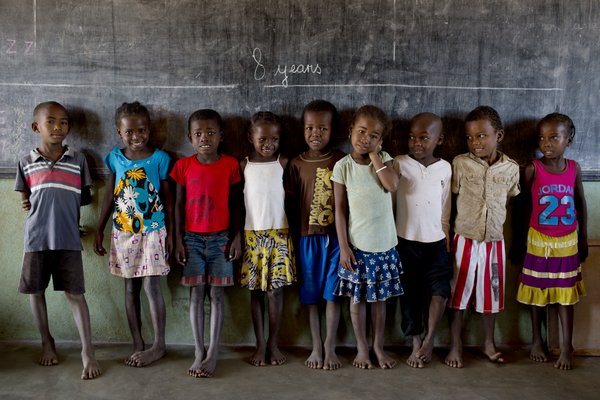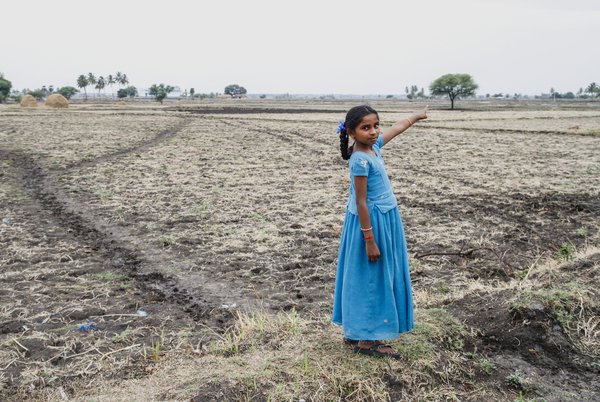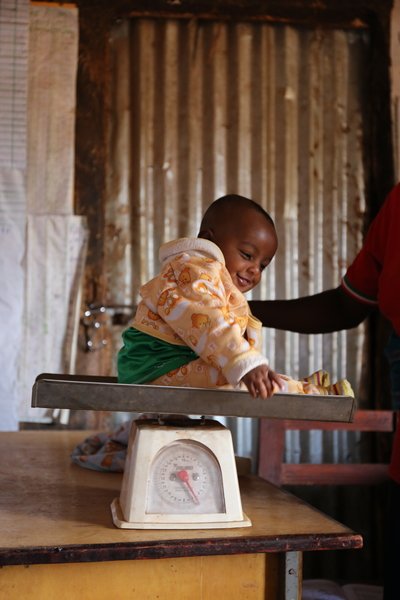Though we often worry about nutrition in terms of our food, it’s really all about what we put into our bodies and that includes water. WaterAid’s new report “Caught Short” found that a lack of clean water and toilets contributes to malnutrition, which in turn can stunt children’s growth and development.
48 million children in India suffer from stunted growth, more than any country in the world. Another 10.3 million children in Nigeria and 9.8 million children in Pakistan aren’t reaching their full developmental potential either. And it all comes down to malnutrition early on in their lives. Malnutrition is caused not only by food scarcity, but also by lack of access to safe toilets, clean water, and awareness of good hygiene practices. These conditions enable dirty water to transmit diseases like diarrhea which can prevent children’s bodies from absorbing the nutrients in their food.
Here are five stories of children whose growth was affected by lack of access to clean water and sanitation.

These children live in area with poor access to clean water or good toilets. Many of the children drink dirty water from an open well and if they need the toilet at school they have to go in the bush. A teacher at Bemamonga Primary says 70-80% of children are malnourished and often miss class as a result of diarrhoea. In total 49% of children under the age of five in Madagascar suffer from stunted growth and 88% of the population live without access to sanitation. Stunting is largely irreversible after the age of two.

At 3 ft 9 inches tall Pushpa (above) falls 6 inches below the average height for her age as outlined by the World Health Organization. Like many children in India, Pushpa has no toilet at home and has no choice but to use a field to relieve herself.
"When I go to the toilet in the field I feel disgusted," she says. Pushpa has also had repeated episodes of sickness and diarrhoea. "I've got really sick this past year and I've had to miss school because of it. I know some of my friends who have toilets in their homes... I think they are doing much better than me and my family."
India has the highest rates of open defecation in the world and also the greatest number of children who are stunted.

5-month-old Teshale (above) goes for routine weight tests for malnutrition in the Burie Zuria district of Amhara in Ethiopia.

Ooti in Karnataka state is a village suffering from high rates of malnutrition. 95% of the homes in the area do not have access to toilets meaning many of the children are forced to go in nearby fields which can quickly spread diarrhoeal diseases. The headmaster of the school, Mr Khajaameen says quite a few children in the school are malnourished and often faint in assembly. India has the highest rates of open defecation in the world, and the greatest number of children under-5 who are stunted. Stunting is largely irreversible after the age of two.

A young girl drinks water straight from a dirty stream in Bekalalao Village Morondava, Madagascar. The villagers say they have no choice but to drink and wash in stagnant ponds, which livestock also use to wash in. Many of the children complain of getting frequent bouts of diarrhoea and sickness.
To make sure that these and other children around the world are able to fully develop into healthy adults, we need to ensure the clean water and safe toilets that many of us take for granted are available for all.
Daniele Selby contributed to this article.